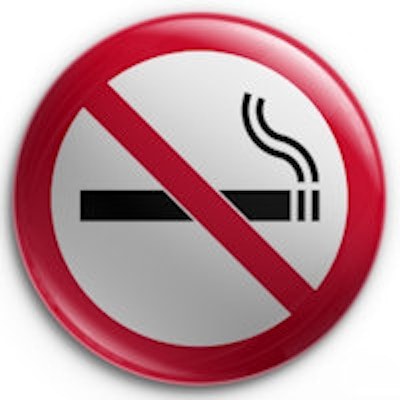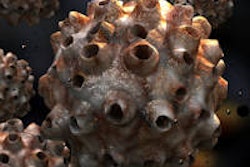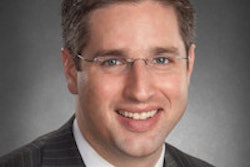
A new study from the U.S. Centers for Disease Control and Prevention (CDC) has determined that its recent antismoking advertising campaign has influenced more than 220,000 to quit the habit among the estimated 1.64 million quit attempts that it inspired (Lancet, September 9, 2013).
"In 2012, the CDC's 'Tips from Former Smokers' media campaign, made possible by the prevention fund of the Affordable Care Act, pulled back the curtain and we showed Americans the tragedies that we as healthcare professionals see day in day out," CDC Director Tom Frieden, MD, MPH, explained in a video response to the study.
The $54 million mass-media campaign, the first of its kind to be funded by the U.S. government, featured television and print ads with former smokers explaining the daily repercussions they deal with as a result of smoking-related health problems. In one particularly powerful ad, a former smoker named Terrie, 51, talks through a voice box about how she gets ready each morning, explaining her process of putting in her denture and wearing a wig.
The CDC's self-examination, performed by CDC researchers at the Office on Smoking and Health at the National Center for Chronic Disease Prevention and Health Promotion in conjunction with RTI International, was designed to measure the effectiveness of the ads, which ran in print and on television from March 19 to June 10, 2012. While developing the ads with the aid of feedback from smokers, the CDC focused on crafting "emotionally evocative and graphic advertisements [that] emphasized the effect of smoking-related illness on quality of life, rather than focusing on smoking as a cause of mortality," the study authors explained.
They featured patients suffering from asthma, heart disease, Buerger's disease, head and neck cancer, and stroke related to smoking in addition to individuals who had quit and were healthy. Placement was designed to reach 75% of U.S. adults more than once. Along with the national ad buy, the CDC targeted local stations in media markets with high smoking rates. The organization estimates that the placement was such that 4 out of 5 smokers were likely to see at least one message.
For the study, the researchers turned to KnowledgePanel, an online survey resource with national representation that is probability based. It selected random U.S. addresses and contacted them with mailings and phone calls, inviting the recipient to respond to an address-matched phone number. CDC staffers did not work in the data collection aspect of the study, the researchers noted.
Prevalence of abstinence
To be included and considered a smoker, participants had to be older than age 18, have smoked at least 100 cigarettes, and smoked every day or some days. All the 5,903 smokers who responded were invited to participate, in addition to a sample of nonsmokers older than age 18. The researchers completed a baseline study prior to the start of the campaign and completed their follow-up immediately after it.
The prevalence of abstinence was defined during the follow-up; smokers who attempted to quit in the three-month period, self-identified as nonsmokers, and smoked zero cigarettes per day were classified this way. Then participants were asked questions to learn about their awareness of the ads.
“Tobacco companies spend more in three days than the CDC spends in a year.”
The researchers applied rates of change in the cohort using the before and after data from the survey. Then they used data from the 2012 National Health Interview Survey, which has monitored U.S. health trends for more than 50 years and includes smoker prevalence information, and U.S. census data for nationwide calculations of the Tips campaign's impact.
"We estimated the national number of smokers who were not smoking at the end of the campaign by applying the prevalence for abstinence in the KnowledgePanel cohort to the total estimated number of smokers who made a quit attempt nationally," the researchers wrote.
Application of these change rates to U.S. census data suggested that an estimated 1.64 million additional U.S. smokers attempted to quit during the Tips campaign and that 220,000 smokers who made a quit attempt remained abstinent at follow-up, they reported.
According to the researchers, 70% of the 5,903 smokers and 58% of the 5203 nonsmokers invited to participate in the baseline survey did so. Among them, 78% of the smokers and 74% of the nonsmokers recalled seeing a Tips television ad. The researchers noted an uptick in the number of smokers that tried to quit for at least one day during the program, from 31% to 35% and a relative increase of 10% in nonsmokers who spoke to a family member or friend about quitting.
Overall, the study estimates that 4.7 million nonsmokers suggested a smoking cessation service such as the 1-800-QUIT-NOW hotline or the smokefree.gov website during the campaign. Calls to the hotline increased by 132% in that period, 200,000 more than the same time period in the previous year, while the website had more 500,000 unique visitors above baseline rates.
Younger smokers, lighter smokers, and those less educated were more responsive in separate stratified models compared with their counterparts. In their discussion, the researchers said that, conservatively, 100,000 of the 220,000 smokers that quit will have done so over the long term, given the statistic that 50% to 75% of smokers return to the habit after one week.
The campaign was cost-effective as well, the researchers noted. "Tips added from a third to almost half a million quality-adjusted life years to the U.S. population," they wrote, based on the age distribution of those who attempted to quit compared with calculations of life years saved at the age of cessation. That resulted in a roughly $200 per life year saved when the total $54 million cost was applied. In contrast, the tobacco industry spends $8 billion annually on promotion and marketing, according to the CDC.
"The impact of this ad campaign is further proof that sustained, hard-hitting media campaigns such as Tips save lives," Dr. Frieden said. "Tobacco companies spend more in three days than the CDC spends in a year running these ads. It is a David and Goliath fight."



















